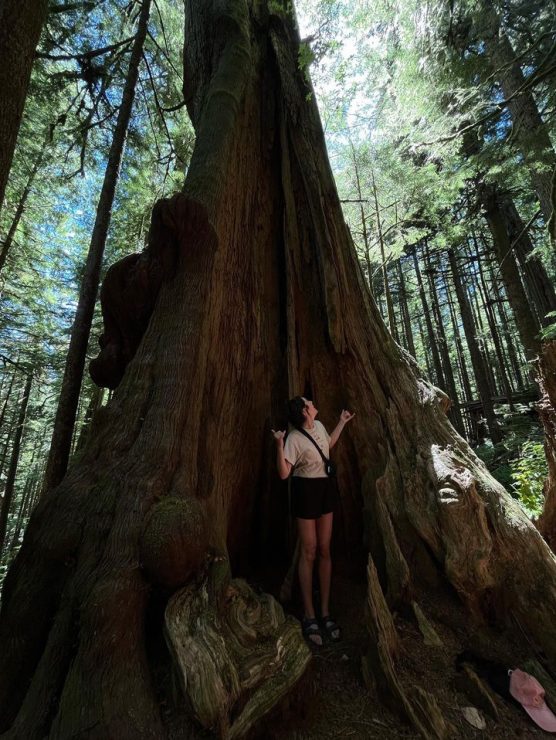Now is the time to protect these irreplaceable ecosystems

Photo by Chloe Latour.
The clashes between environmentalists and industry workers on the topic of old growth logging are nothing new to British Columbians or the UVic community. The mass protests at Fairy Creek saw over 1 000 people arrested in a 10–month period from 2021–2022. One of the largest acts of civil disobedience Canada has ever seen, the Fairy Creek protests sought to protect ancient forests in the area around Port Renfrew from being clear-cut. These forests are part of the three per cent of productive old growth which remains standing on Vancouver Island, according to a Sierra Club report.
In the fall of 2020, the B.C. government announced their commitment to the recommendations of the Old Growth Strategic Review (OGSR), an independent report which they commissioned. This report outlines 14 recommendations for changes to the way forestry is conducted in B.C., which includes highlighting the need for greater representation of Indigenous communities in decision-making. The third anniversary of this pledge has come and gone, and thus far only one of the 14 recommendations has been implemented, with minimal strides made to meet the remaining 13.
Environmental NGOs like the Sierra Club and Ancient Forest Alliance are calling for the other recommendations to be met in all due haste. The first recommendation of the OGSR is that Indigenous communities — whose territory the forests are in — be involved in decisions going forward. The deferral of logging in Fairy Creek, which was approved in June 2021, came at the urging of the Pacheedaht, Ditidaht, and Huu-ay-aht First Nations, whose traditional unceded territory was the site of the protests.
However, the response from nations on the topic of allowing old-growth logging in their territory has been mixed. As things stand, nations who approve the logging are in a position to work with logging companies and receive partial monetary compensation from the profits. No such compensation is currently available as an incentive to oppose the logging.
Both the Sierra Club and B.C. Green Party Leader, Sonia Furstenau, have called for “conservation financing” — that is, funding from the provincial government to offset the loss of revenue for nations who wish to protect old-growth in their territory. Unless such a fund exists, Furstenau points out that Indigenous communities are in “a difficult position.” At this time, there is no clear indication from the provincial government if such a fund may be considered, or what specifics this input from nations will look like going forward.
Meanwhile, trees continue to fall. The temporary deferral which protects the area of the Fairy Creek protests was renewed for a further two years this past June. However, other sites of old growth forest are under what are called “voluntary deferrals,” within which it is still legal to continue logging. This misleading classification has deflected public scrutiny away from the topic, enabling the legal logging of more than 55 000 hectares of old growth since they came into effect, with little push-back from British Columbians.
There also remains a failure to agree on what constitutes an “old-growth forest.” The Sierra Club report, which concluded less than three per cent of Vancouver Island’s productive old growth remains standing, uses a different metric than traditional forestry practices to measure old growth. In current forestry practices, trees in wet climates are considered old growth at 250 years of age, regardless of size or productivity. This same Sierra Club report highlights the difference in productivity of a large-tree, intact ecosystem which we picture with the term “old-growth.” These ecosystems are fundamentally distinct from small-tree, subalpine forests which can be ancient, but are less productive in terms of biodiversity and carbon storage.
B.C. Premier David Eby has pledged to protect 30 per cent of B.C. land by 2030. In order to meet this target, policies will need to be enacted and changes brought into our current forestry system. The provincial government can start by implementing the 13 remaining OGSR recommendations, by being transparent with the public about the reality of voluntary deferral sites, and by recognizing the need to protect the few remaining intact, large-tree ecosystems which are irreplaceable in our lifetimes.








